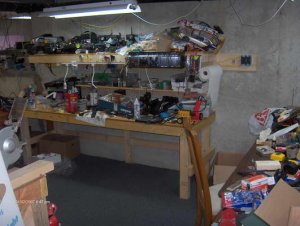JR&Son said:
Sounds like you wired of the wrong side of the Power Supply.
With that said...
Ill muddy the waters....
I would not run DPDT switches
Personal choice here, but relays would and could do LOADS more
You do not REALLY need resistors, you need a voltage regulator
In this case the resistoris the regulator.
The only other thing I can add would be that not all LEDs are the same voltage and some are multi colored
Like I said, just to muddy the waters.
JR&SON
um actually using a voltage reg without the resistor is a BAD idea
the voltage reg does exactly that - holds the voltage at a certain voltage (ie 7805 at 5v, 7812 at 12v )
the resistor in a led series circuit does drop the voltage yes- but its primary job is CURRENT limiting
most(not all tho) leds require at most 25mA and depending on colour a forward voltage between 1.2 to 3 volts
you normally get a data sheet from where you bought the led that has Imax(current) and forward voltages listed on it
you then use a formula to calculate the correct resistor on it
(dont know how well this formatting will work for the formula)
(Vsupply - Vled)
----------------------- = Resistor value
(Imax * 1000)
where the resistor value is in ohms
Vsupply is the voltage from the power supply
Vled is the forward voltage listed for your led in volts
Imax is the current listed for your led in mA
this is very unlikely to be an actual resistor value (only certain values are available in each range) so you look at the values available and use the next HIGHEST value closest to your calculated figure
eg you calculated you need a 557 ohm resistor -not available(there are good technical reasons for this which i wont bother to explain at the moment)
in the most common range available the next highest available value would be a 560 ohm resistor- thats what you would buy - not the 520 ohm
for leds a 1/4w is quite ok- but a 1/8watt can be used if space is really tight(ie in a loco shell)


